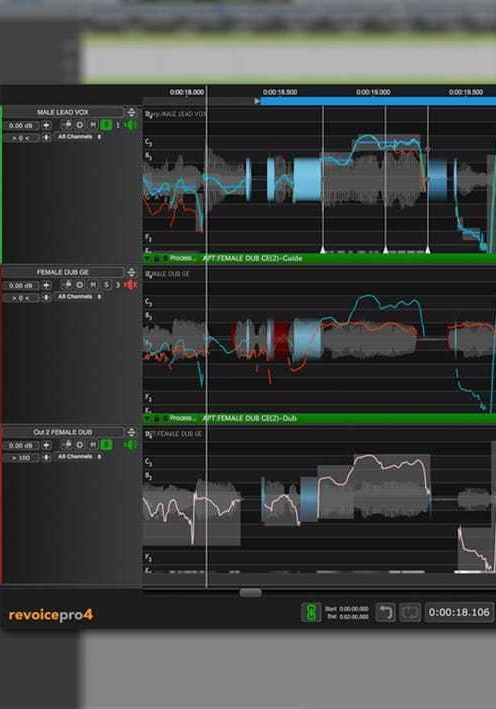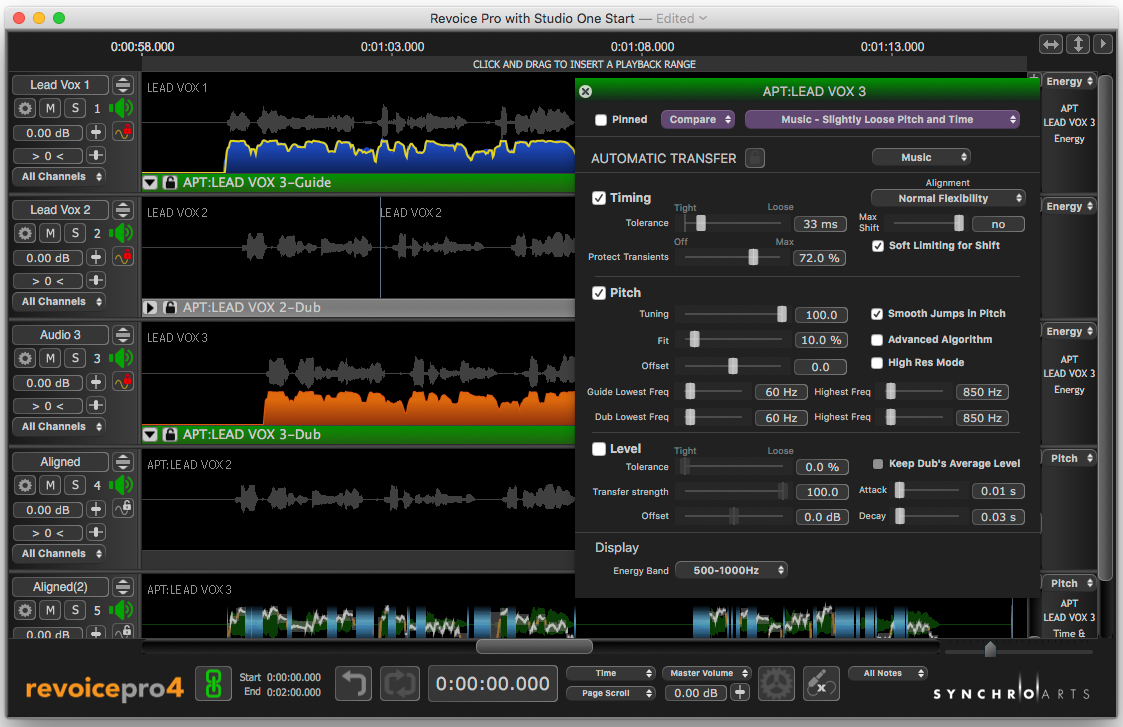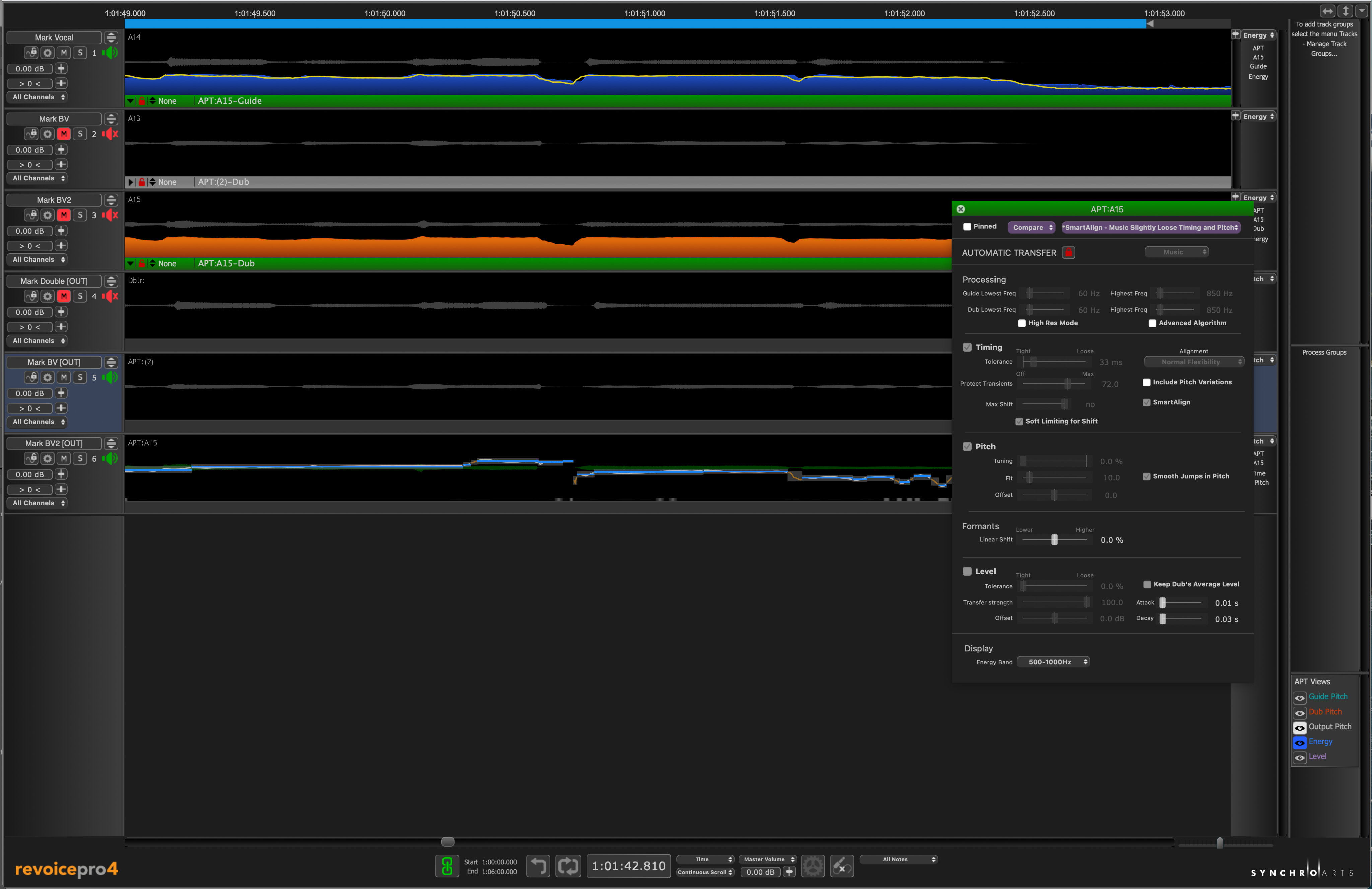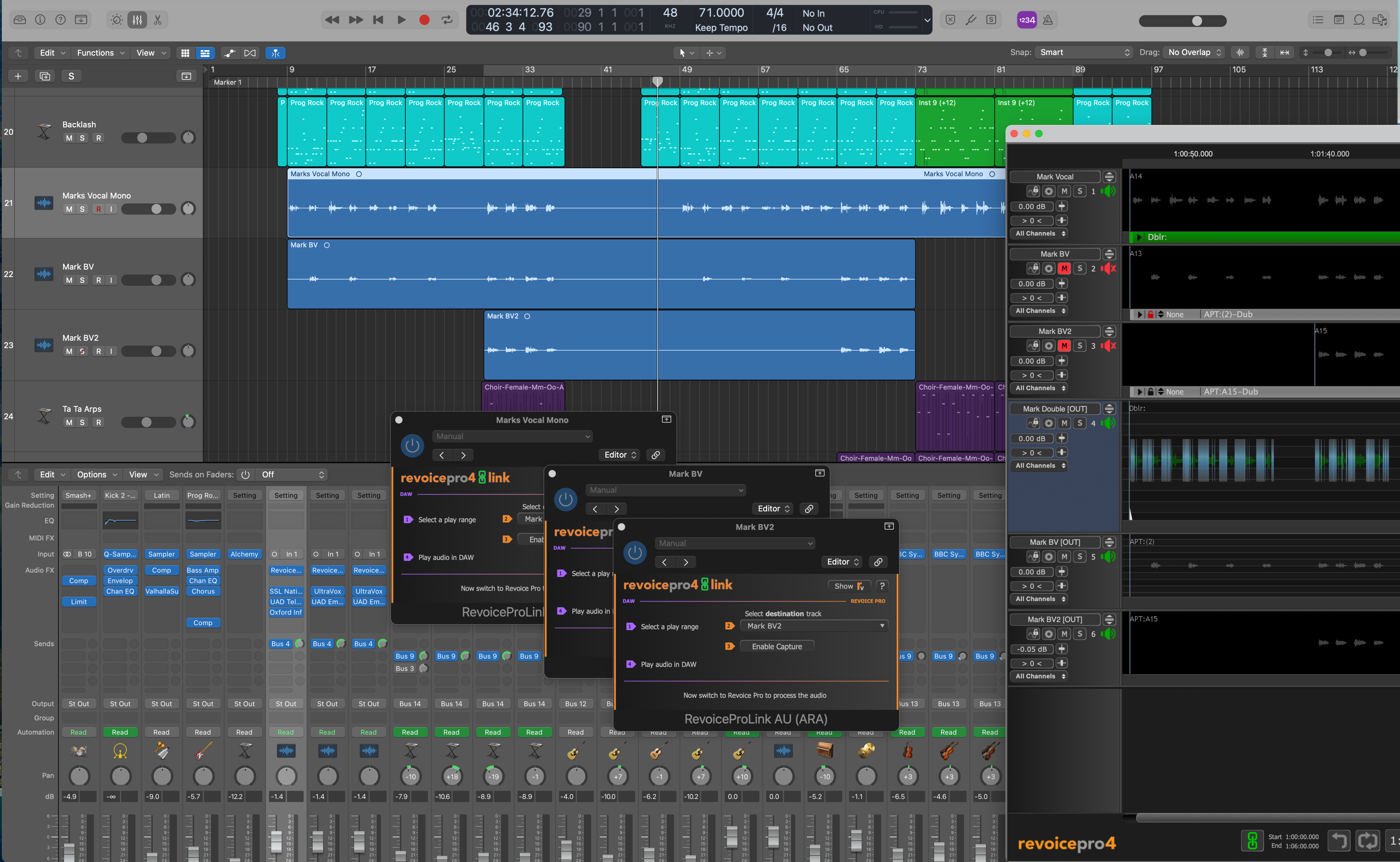SynchroArts have become something of a specialist in the art of vocal processing – and when it comes specifically to vocal time alignment and pitch manipulation, they are the first name on every serious engineer’s lips. Headliner endeavours to discover what all the fuss is about…
While this review is focused on Revoice Pro 4, it’s first worth mentioning the two other products in the SynchroArts range, as one of them may well be perfectly suited to your specific needs.
VocAlign Project 5 is relatively inexpensive and includes some of the alignment algorithms from Revoice Pro, but with far fewer parameters. If you’re an ADR engineer this is a tool that’ll save both you and your talent endless retakes and hours of frustrating studio coaching, leaving you more time to match and get the consistent sound you’re looking for. While this is a basic version with limited parameters, it also works with aligning sound effects, and produces very natural and pleasing results. It also served as a good place for me to start as I delved deeper into the SynchroArts family.






